-
Posts
4,730 -
Joined
-
Last visited
-
Days Won
117
Content Type
Profiles
Forums
Resource Library
Events
Gallery
Blogs
Store
Community Map
Posts posted by Mayner
-
-
Thanks Kieran
Josfstadt's photo almost blew me away so much atmosphere almost timeless although the yellow British Railways Scammells and cars on open wagons sets the scene in the late 50s early 60s.
Going back to July 2005 the only remaining container services were from the North Wall to Cork and Ballina, trains seem to have been fully loaded during the last week of July, the yard even looked busier with containers stacked awaiting loading or collection.
Not a great photo but probably the last time an 071 worked a container train to Cork
Passing Straffan 201s were the usual power
Its hard to see how IE could break even let alone make a profit with the CPW trains restricted to 12 wagons.
View of the "groupage" area 17 July
Cork Liner appears to have departed, what looks like the Ballina Liner being loaded on the right. The Cork Liner usually appeared to be loaded on the road under the tail of the gantry, the 5 roads under the gantry used to continue under the Sherriff Street bridge into the sundries loading area, now the National Conference Centre.
The day the Sun came out 20 July loading the Cork Liner
My scoop of the week the up Claremorris Liner
Possibly running late container traffic to Claremorris had ceased but Claremorris was now the railhead for Galway and possibly Sligo keg traffic.
Empty ESSO tank wagons from Claremorris bring up the end of the liner. Possibly the oldest wagons in revenue service at the time, they were owned by ESSO built in the late 1950s and re-gauged for use on the Sligo, & Oranmore-Claremorris oil trains in the late 60s.
The ESSO wagons were quickly scrapped after the ending of Oil traffic to Sligo and Claremorris and the remains of the Midland Yard is now occupied by what was originally intended to be a "temporary" Dublin Docklands Station
-
 1
1
-
-
Its hard to believe that IE container train services ended nearly 10 years ago. The run down between the closing of the Holyhead Yard container terminal in 2003 and the ending of the remaining container train services to Cork and Ballina in July 2015 was rapid to say the least.
I had to return to Ireland in May and July as a witness in some court cases from work.. It turned out I was not called for the July case, so ended up spending several days train spotting witnessing the last days of the Liners and the arrival of the MK4s but that was a !!!! wet day and I had to run for the airport.
May 2005 220 emerging from the Park Tunnel with the down Cork Liner
The smoke screen was from a BoBo "yankee engine" with a worn prime mover piloting RPSI 186 through the tunnel.
220 with a lightly loaded Cork Liner checked by a signal at Island Bridge Junction 29/5/2015
The Liner was checked by what looked like an Up Waterford passenger, while waiting the driver got off and manually released the brakes on the CPWs using the loco brake to hold the train. The driver explained that the loco compressor would take so long to release the wagon brakes he would probably loose his path through the junction.
The culprit 6105 leading an Up Waterford passenger
Devastation of the North Wall
The once great Holyhead Yard reception roads reduced to a backshunt for trains from the GSWR & GNR lines to access the Midland Yard.
The Midland Yard 27 May 2005
Just two roads in use for loading containers empty CPW wagons for Cork, conventional flats for container traffic to Ballina
The lines under the gantry in the background lead under the Sherriff Street bridge to an area used for loading container traffic that was not handled in the Holyhead Yard mainly sundries and scrap steel for the Galway Metal Company.
The gantry was originally intended for transferring containers between fixed formation trains rather than shunting individual wagon loads, in practice this part of the Midland Yard continued to function as a marshalling yard for traffic to and from the Midland, Holyhead and Dardanells Yards until the function was transferred to the re-modelled East Wall Yard in 2003/4.
-
 1
1
-
-
Excellent work as always.
For a moment I thought you were throwing the cat among the pigeons by repainting one your own scratchbuilt 201s or Marks Models resin version from the days Irish rtr diesels were just a gleam in Paddy Murphys eye.
-
Final test builds of these vans are complete and I am currently accepting orders/expressions of interest in the MGWR Horse Box and MGWR Meat Van Kits for delivery Autumn 2015. Kits priced $92NZ (£40) with wheels or $80 NZ (£5) without wheels shipping $18nz(£ 8 stg).
The vans can be assembled in OO or 21mm gauge, rigid or compensated chassis. The vans are suitable for assembly by solder or superglue.
-
The drawings for the Standard Open, Brake Standard Open and Brake Standard Generating Steam Van are ready for the engravers should have the etches for the SO & BSO should be available from August.
The BSGSV may take a little longer as the overlays are a bit more involved and may require revision before I release the fret.
-
No need to look that far away for an example of the "care & maintenence" program the neighbouring New Ross & Ballinacourty lines when t the same way, annual weedspray until theres a problem and then abandonment till the walky groups want a new place to walk their dogs.
The issue of mothballed lines is really a Government policy issue than anything else. The disused lines are a liability risk & draw resources away from the operating railway, its cheaper than paying IE to maintain the lines or heaven's forbid opening track maintenance and railway operation up to competitive tender.
The mothballing of the South Wexford and Mullingar-Mullingar was quite different to lines like New Ross and Ballinacouty which were converted to engineers sidings only accessible for engineers traffic, usually the weed killer and track -laying trains to swap out good for worn track panels to keep secondary main lines open.
-
Maybe the lawmakers think a drone is some sort of bee?
There has been some impressive footage of urban areas that fell foul of the aviation authority, a strongly worded letter was the only outcome.
Most regulators are in a similar position but catching up with the technology, a local man received a written warning for flying at night into restricted airspace.
Irish Aviation Authority guidance and regulation governing un-manned flight is similar to new Zealand //www.iaa.ie/media/DRONESQuestionsandAnswersFinal1.pdf .
It looks like pilots for commercial drone use will be subject to licensing.
-
There is a colour photograph by John Edgington of a green liveried D303 on page 87 of Irish Railways in Colour from Steam to Diesel 1955-67 Tom Ferris 1992 http://www.amazon.co.uk/Irish-Railways-Colour-Diesel-1955-67/dp/1857800001
The photo taken in 1956 is a panorama of the Holyhead Yard with D303 shunting some wagons, the loco is quite clean and seems to be in the late 1950s light green with eau-del nil lettering, no snail or eau-de-nil lining below the gutter line, the chassis and outside cranks are in shadow but steps and sandboxes are in green.
John Edgington's photos are worth looking out for as they seem to have been mainly in colour and as he seems to have recorded the wider rail scene rather than just locos.
The editor of New Irish Lines may have the photographers contact details.
-
The night time photos are very atmospheric, the feel of an Irish village at night
-
Cue an exploration series of some closed lines?
Landowner permission would of course be a major issue. None of us would want a drone over our private land with unlimited access. BallyG station is different as it's in public ownership (CIE Property Board or IE, still, presumably?)
I don't think a lawyer would get to far with "public ownership" as a defence for flying a drone over an airport, military base, prison, or other publically owned property without permission.
The railways may be in public ownership, but entering CIE/IE property without permission and flying a drone within the railway loading gauge is likely to be trespassing.
-
IEs agreement with the NTA for 'mothballing' involves a programme of inspection and maintenance to ensure the Barrow Viaduct does not become a hazard to shipping, managing the liability risk for IE (securely fenced, bridges and level crossings not a hazard to the users) and weed killing to keep the line clear for ail traffic until the track became unsafe for rail traffic.
The agreement does not appear include sleeper or level crossing barrier replacement and IEs proposal discussed using tie bars to maintain the gauge until sleeper decay became a significant problem.
I suppose the message is to get out there and record any train or inspection movements over the line while there is still a chance, whats happening on the South Wexford is not radically different to Mullingar-Athlone in the early 1990s by 1996 the line was unfit for rail traffic.
-
Its probably best to contact Bachmann Europe directly with enquiries for spare parts.
Parts for American locos and stock can be ordered from Bachmann USA on line, but some vital parts for current models are "sold out" with no re-stocking date
-
In my opinion 3d printing has two main issues currently for modellers, 0.1mm resolution is just too rough for compound curves on OO gauge, and self learning an appropriate 3d package that can integrate into the printer.
Nevertheless even with current resolution limits, it has huge potential for renditions that can then be fine touched.
In this part of the World 3D printing is used quite widely both by the trade and individual modellers. There has been something of a shift from using prints from high resolution local printers to make patterns for brass and resin castings to bureaus like Shapeways.
Shapeways WSF material can be remarkably effective for models in S scale and larger.
WSF does not have the layering effect of some of the other materials, the secret in achieving a decent surface finish is to build up the surface in preparation for painting with a primer/filler aerosol, the WSF surface finish is reasonably good as it is for wagons.
Some kit manufacturers are now using Shapeways to produce brass castings produced from 3D models rather than the traditional lost wax or whitemetal casting processes
The better designers tend to be experienced modellers who are also professional CAD draftsmen/ 3D modellers.
-
Agree. For me DCC is being able to operate locos independently on the same section of track without the need for block switching and wiring.
It's just easier to control a loco from a hand held cab rather than a bank of switches and a controller. Sound and lights are a nice bonus, but I don't ever see myself running accessories or points using DCC. In that case the convenience and tactile feel of lever arm switches is more useable than typing silly accessory and point numbers into a cab unit. DCC's momentum capability is nice also, but I have that on my DC inertia controllers anyway (i.e. brake simulation). Having only moved to DCC last august, I'm glad I made the move despite the cost of decoders and the time to retro fit them into old stock. Some were easy to do, but a few were really awkward. The plug in 21pin chips on MM and Bachmann locos couldn't be easier. Split frame Bachmann steam locos are really a no-no for DCC, IMHO.
I have used DCC in N, HO & G Scale American layouts but have stuck with analogue for my Irish narrow gauge layout.
The reason for sticking with DC was the amount of work involved in fitting decoders to small steam locos and unreliable operation as DCC fitted locos tended to be more sensitive to power pick up issues than DC.
I use hand-held rather than panel mounted controllers as I prefer walk-around operation on an end-to end layout. I use live frog points and use the auxiliary switches on "Blue Point" switch machines to route power to the frogs and switch sections between controllers than a separate control panel.
Power pick up was less of an issue with HO & N diesels than small steam locos as the diesels had pick up on both bogies and flywheel drive, while the steam locos picked up on only 4 or 6 wheels.
Northman:
That Morley Vortrak controller seems to be an excellent piece of kit, still use a 40 year old H&M Safety Minor. The combination of panel and hand held control seems to offer the best of both world, hand held for shunting the yard and panel control for watching trains go bye on the main line.
Most of the American style DCC systems are designed for walk-around operation on large American layouts.
At an operating session visiting operators sometimes bring their personal Digitrax or NCE throttle and loco consist to run a particular train. Train movements are often controlled by dispatchers or train controllers from a control panel similar to Connolly signalling centre. Once a detection and signalling system is added there is little to choose between DC and DCC in the complexity and amount of wiring.
CTC Panel Oakland Pacific layout Auckland
-
Hi Andy
There seems to enough interest to go ahead with both the overlays for the Dapol coaches and a scale length/width coach.
I am planning to release side overlays for the Second Open, Brake Second Open and BGSV in September/October. The coach likely to be sometime in 2016 once I have released the MGWR 2-4-0 & CIE 4w container wagons.
Luckily its the middle of winter here and I have more time to catch up on my work backlog
There seems to be a reasonable level of interest in a set of parts for a scale width/length coach
-
The 62'9" wagons were air braked originally used on liner trains to from Dublin to Cork, Limerick and Galway. The wagons were converted to carry timber when the log traffic started in the mid-1990s.
The Galway train was a Liner/Mail with a mixed consist of coaching and freight stock, with the wagon running at the rear of the train behind the mail & parcel vans.
A short train of these wagons appears near the end of Colm O'Callaghans video
-
I wonder would Mallow-Waterford have survived
had the Ballinacourty project had come online
sooner.Mallow -Waterford closed in March 1967,
While the spur to Ballinacourty to service the
Quigley plant came about around 1970.
Trains could have run to Mallow via
Dungarvan, and perhaps beet trains
could have run via Dungarvan as well.
At one stage the GSWR & F&RHR had plans for a cut-off line between Dunkettle & Fermoy to reduce the overall journey time to Rosslare and the possibility of adding Fermoy to the Cork suburban network.
Pfitzer appear to have originally planned a much larger operation at Ballinacourty with quarries at both Bennettsbridge & Lombardstown on the Kerry road supplying dolomite. This would probably resulted in heavier magnesite & oil traffic between Ballinacourty & Cork which would have kept the western end of the line very at least until the 2nd oil crisis hit.
-
Electro-motive seems to have lost serious market share to General Electric and other manufacturers in recent years. Partially to do with the thirsty 2 stroke engine and difficulty in developing a prime mover that meets American & European emission requirements.
Locally Kiwirail are replacing General Motors 645 powered locos with MTU powered Chinese imports but planning to retain GE U Boats for their fuel economy and superior low speed haulage ability on heavy freights on steeply graded twisty lines.
About 10 years ago IE were considering replacing the 201s on MK4 passenger services with "light weight power cars" something that would have made more sense than re-powering the 201s & 071s as most of the high speed milage is on fast passenger rather than freight traffic.
Mullingar-Athlone would need major investment even to be maintained as a diversionary route. The line is disconnected at the Athlone end, most of the sleepers needed replacement and rails were burred over about 20 years ago.
-
Photo of a MGWR 0-6-0 and coaling crane at Broadstone in GSR days.

Possible conversion for the HO Jordan steam navvy? http://www.gclaser.com/ho-scale-jordan-303-erie-b-2-steam-shovel-detail-kit/
-
When I had a proper job, we had a licence-building arrangement in Macon, Georgia, for just that reason - they wouldn't buy the stuff unless they could pretend it was what they like to call "native". We had endless trouble with the stuff they assembled and once, in a meeting about it with my extremely humourless boss, he declared that "These Americans - they're just a bunch of cowboys!" Everybody started laughing and he just couldn't see why. So I said, "Actually, John, some of them are Indians", and he thought I was being racist about immigrants from the Indian sub-continent. It was like working in a mental hospital.
Its nearly 60 years since Eiesenhower warned about the defence industry taking over. The United States foot dragging over the Pacific Trade Agreement is an excellent example of how their approach to trade and protecting American corporates has not really changed much since the 19th Century
-
it may be something to do with enthusiasts being reluctant to get to dirty and close to the coal stage.
Some of the larger depots such as Broadstone, Cork & Tralee seem to have used small self propelled rail mounted steam cranes or even a diesel crawler crane like a 10RB for coaling.
In some depots coal was dumped on the ground and loaded with a crane than using a coal stage, the MGWR used hopper wagons for loco coal traffic between the North Wall and Broadstone. At Broadstone and Cork loco coal wagons were unload from a raised gantry system similar to NER coal drops.
The cranes seem to have used a roll-over skip rather than a grab, so the coal men would have to load the coal into the skip using a shovel, but at crane could tip the coal into the tenders of the larger locos built from the1900s onwards.
I think Anthony Burges book "Chasing the Flying Snail" may have some photos of the coaling arrangements at Tralee
-
[ATTACH=CONFIG]19243[/ATTACH]
Wonderful modelling challenge fits in with the GUBBU years perfectly

-
The vans certainly look the part!
I hadn't thought of swapping the ends between a Parksde Vanfit and a Pallet van to build a pair of Irish Van
-
Has anyone a photo which shows the roof detail for the boiler/generator compartment?
The CIE drawing isn't very clear there appears to be a removable access panel immediately above the boiler and funnel shaped exhaust vent above the generator.
.png.c363cdf5c3fb7955cd92a55eb6dbbae0.png)

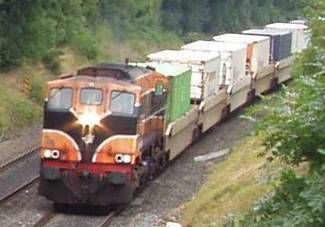
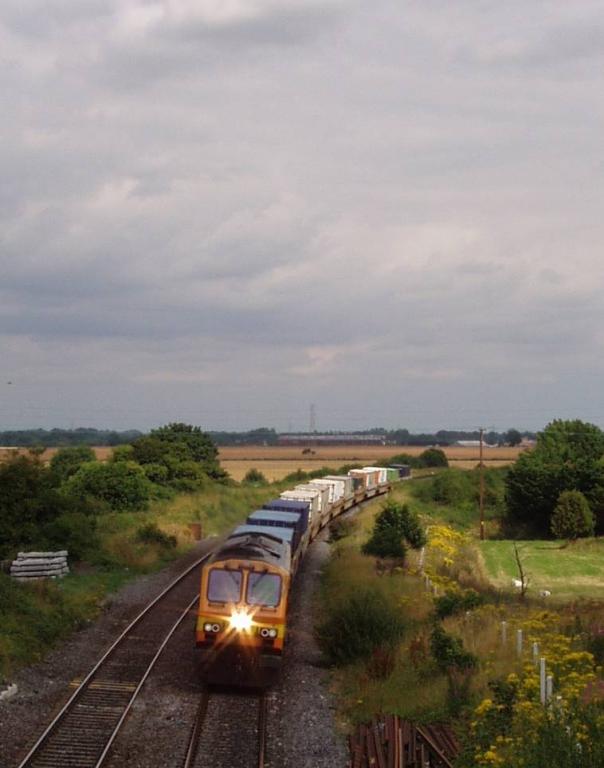
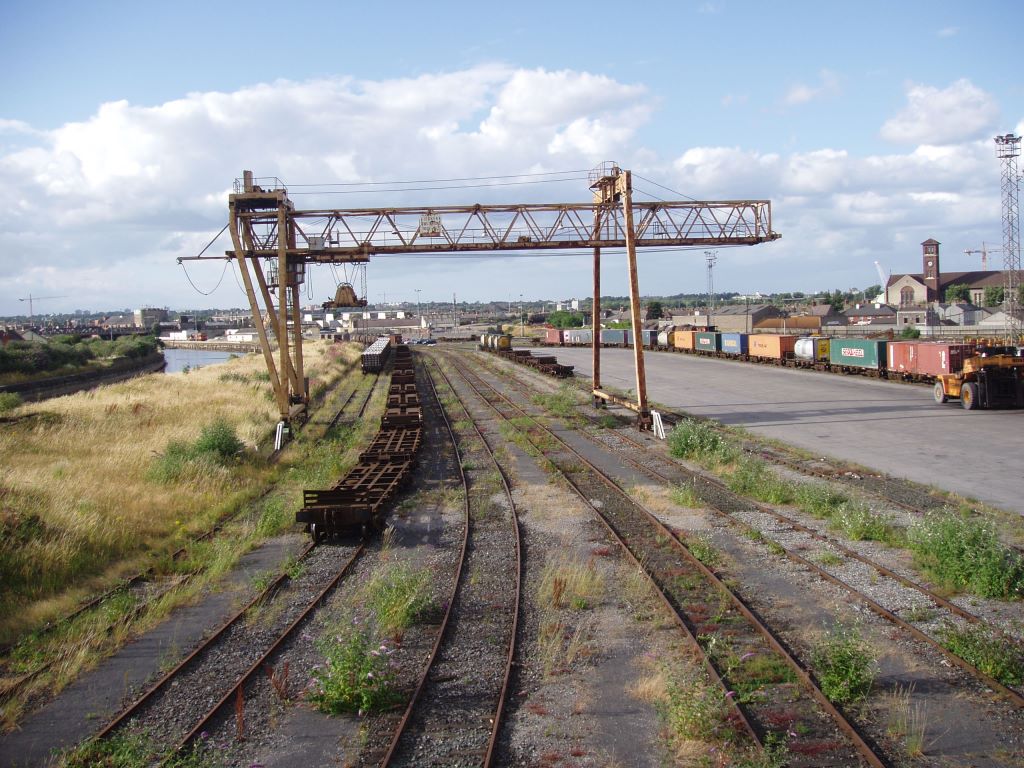
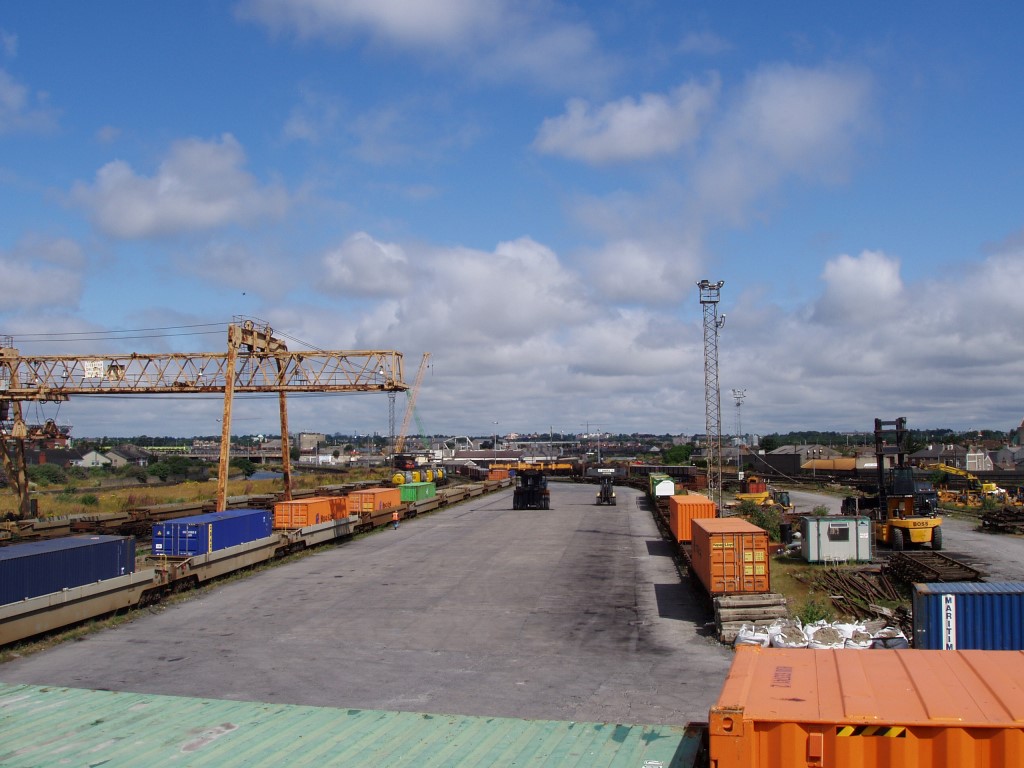
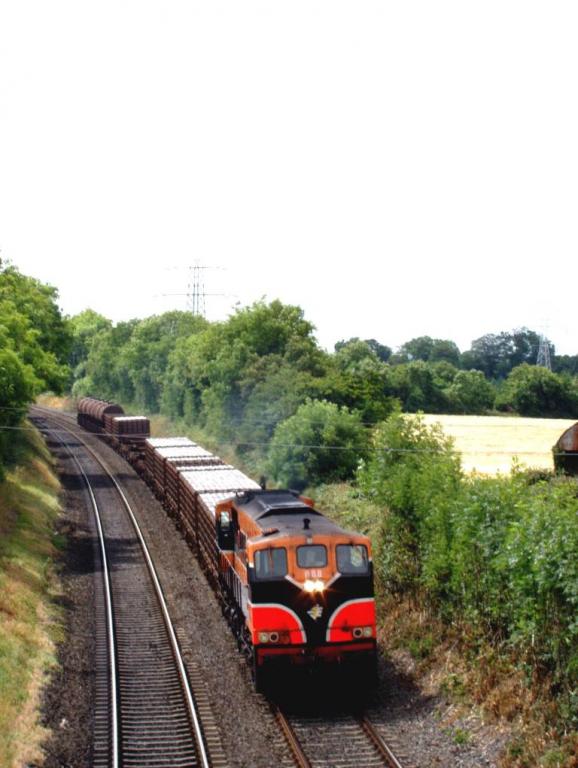
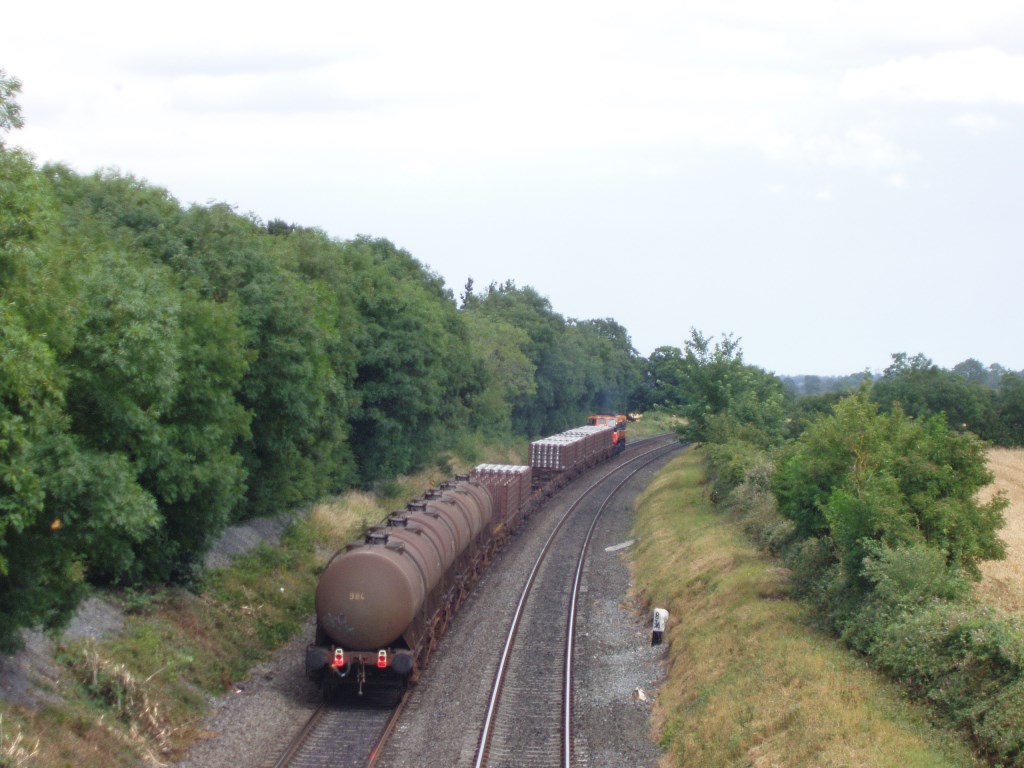
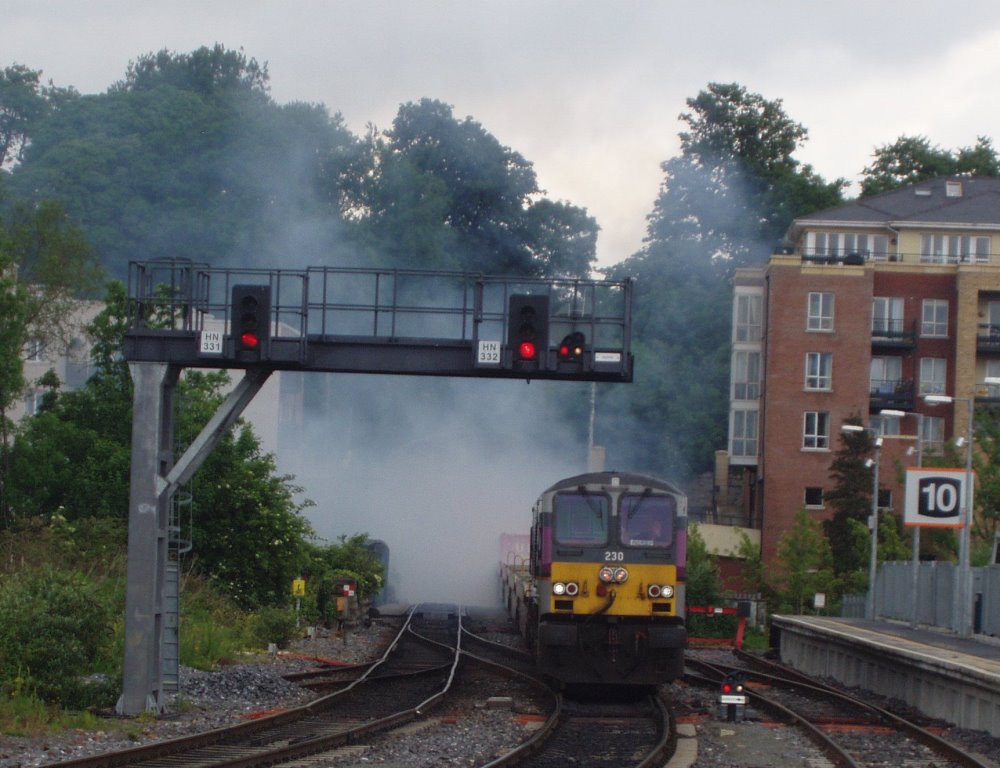
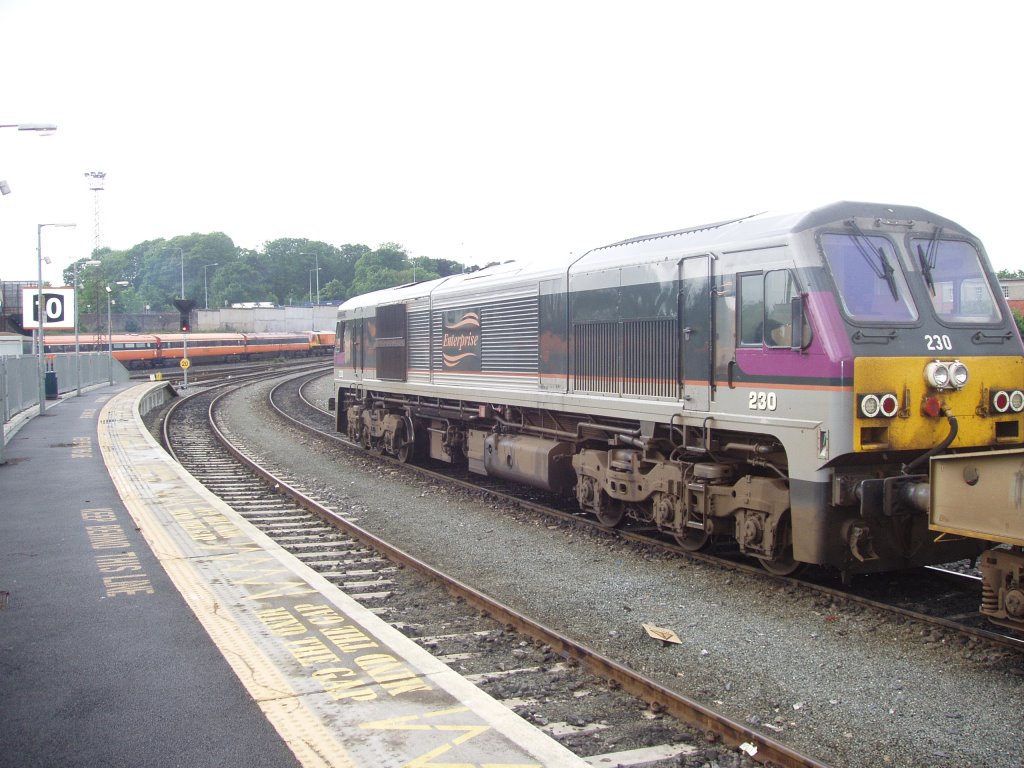
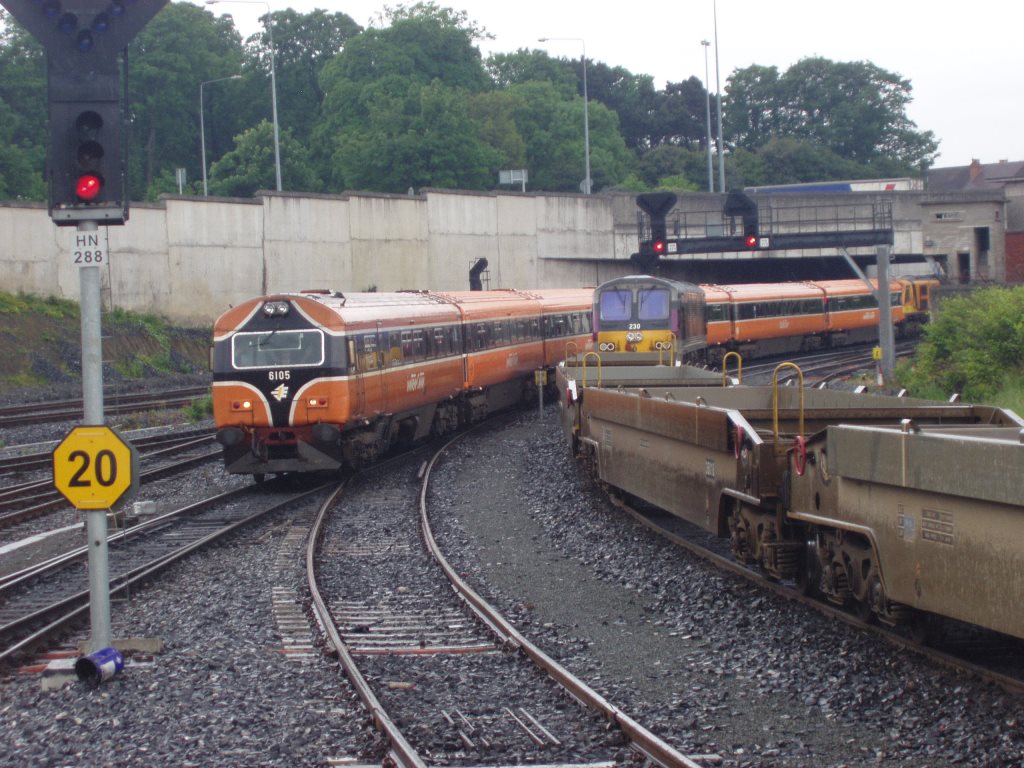
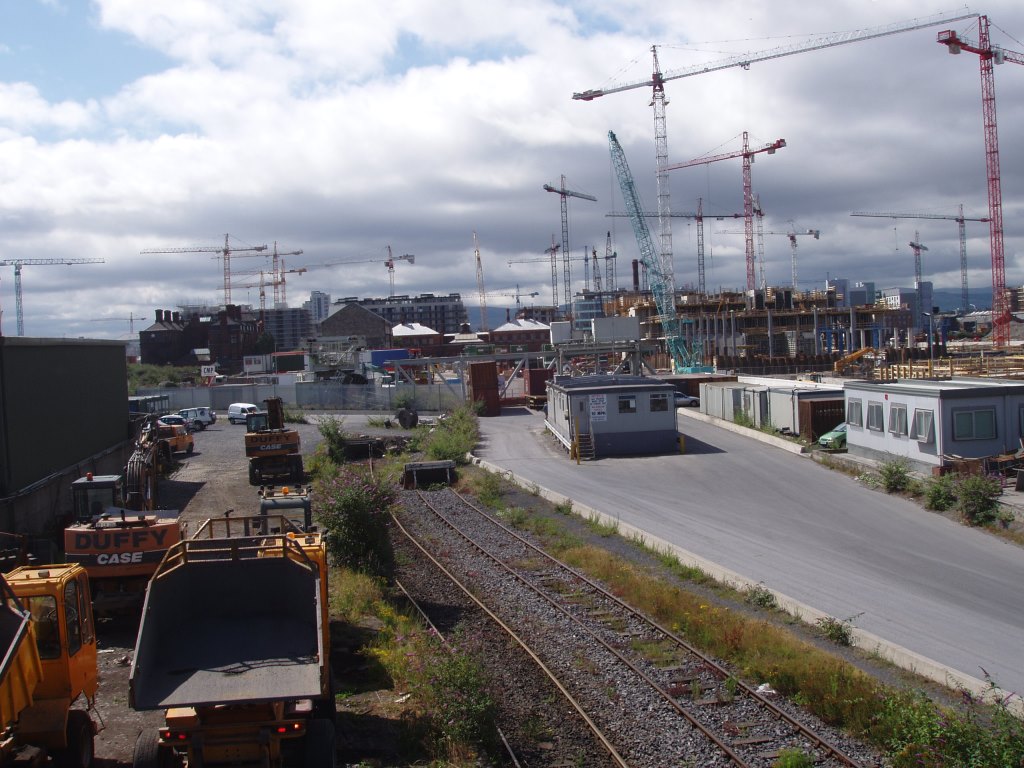
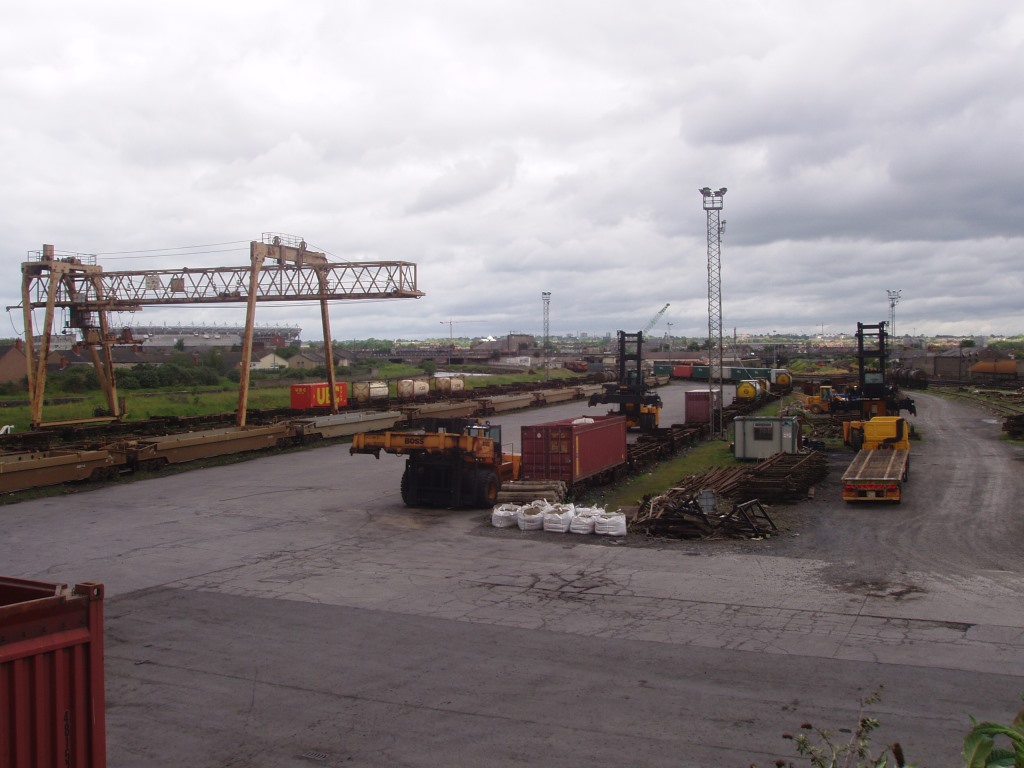




.jpg.0c2c0c73649a1556581201ead0109773.jpg)
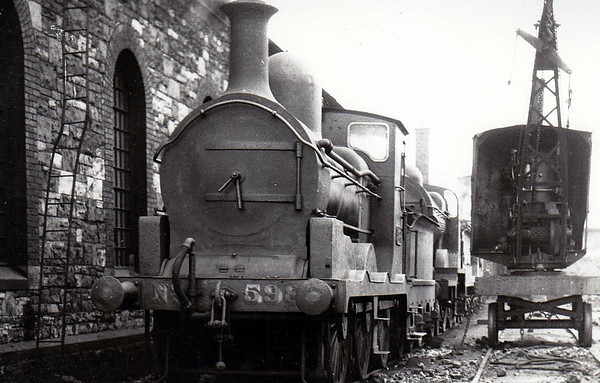
A week chasing trains during the school holidays.
in Photos & Videos of the Prototype
Posted
Came across this a week filming trains last year during the winter school holidays.
Mostly filmed day and night on the outskirts of Christchurch Days and on the Midland coal line classic GM & GE power